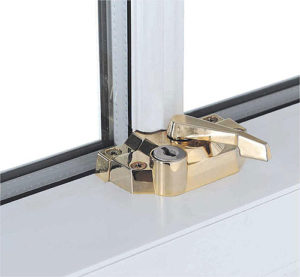5 key features to look for when buying UPVC Windows.
If you are seriously considering buying replacement UPVC windows, then being forearmed with some “insider” knowledge can probably help you avoid ending up with some “cheap double glazing”.
The differences between good or not-so-good UPVC windows can be easily spotted if you know what to look for. So here’s our super quick guide to put you “in the know”.
1. Window Energy Ratings (WER)
 Your first indication of the overall thermal effectiveness of the windows will be the colourful WER Label.
Your first indication of the overall thermal effectiveness of the windows will be the colourful WER Label.
Running from A to G, the WER ranks the performance. Ratings of A++ will be the most energy efficient, a rating of G is the lowest.
Since 2010, in the UK, the lowest rating accepted to meet building regulations is “C” (unless there are exceptional circumstances).
It’s likely that A++ rated products will attract a premium cost. Therefore, it can be worth bearing in mind that (In most circumstances) “B” rated UPVC windows will be perfectly adequate.
2. What guarantees are on offer and what do they cover?
The longer the guarantee, the more confidence the manufacturer has in their product. Look for at least 10 years. The guarantee should also cover discoloration of the UPVC as well as defective products.
If you are asked to make a deposit on order, then you should only do so if an “insurance backed warranty” is on offer. There are installers that will do the work without taking an initial deposit, but still take the time to scrutinise the deal thoroughly.
Do the double glazed sealed units carry a separate warranty? How are they covered in the event of defects or premature failure?
The installation work itself should also carry a warranty. Even the best windows will be rendered useless by a bad installation job. Clarify who is responsible for what.
3. The UPVC window frames (profiles)
There are a few things to bear in mind when it comes to the UPVC window profiles.
- Internal beading for the glass – that prevents glass removal from the outside.
- Chambered profiles – the more chambers, the better the energy efficiency is a fair general rule to follow. They not only allow for better insulation; the chambers can also be used to house metal reinforcing.
- Welded Joints – more likely to prevent gaps forming as the window expands & contracts slightly during hold or cold periods. Mechanical joints can allow gaps to form over time thereby potentially allowing water or draughts to penetrate.
- Weather seals – two types to look for. 1st are the rubber seals around the glass. Look for gaps in the corners of the window frames. Sometimes these rubber seals get stretched during installation. Over time they will then shrink back and leave a gap in the corner. 2nd is the “brush” seals that sit on the inner facings (lips / edges) of the window frames. They prevent draughts and water penetration.
4. Window Furniture
 What we mean by this is all the “bits & pieces” such as handles / locks etc. “Moving parts” themselves may have a separate clause under the warranty which limits coverage to around 2 years only, so check this out.
What we mean by this is all the “bits & pieces” such as handles / locks etc. “Moving parts” themselves may have a separate clause under the warranty which limits coverage to around 2 years only, so check this out.
- Handles – should be fixed securely and not wobble. Better if they are also lockable (Check the warranty for coverage of defects or failure). If you don’t ask about the handles, then you are likely to get a basic version fitted as standard.
- Hinges – whatever design is incorporated; they should be robust and fixed securely and feature stainless steel screws. Zinc coated screws will degrade or rust. If your hinges deflect, deform or de-align, this can cause leaks or condensation problems. A quick test to spot zinc screws is to use a magnet, if it does not stick to the screws they are stainless steel.
- Interlockers – these are small blocks which are angled and fitted in a few points around the inner frame (where the window casement meets the frame when closed). Their purpose is to help align the window as it closes and keep it pulled firmly closed. Make sure interlockers are fitted securely.
- Multi-point locks – these are the most effective and secure.
5. The Double Glazing
Once again there are a few things to look out for. As mentioned previously, check the level of coverage under warranty.
What are the spacers made from? Spacers are the internal strips along the edge of the sealed double glazed unit. Aluminium spacers conduct heat. “Warm Edge” spacers made from composites, rubber or plastics are more thermally efficient. Go for Warm Edge spacers.
Two popular glazing options, or extras, are gas filled units (using Argon can add around £10 to £15 per square metre of glass) and to fit low-emissivity glass. Commonly referred to as “Low-e” glass.
If you are going for Argon gas filled double glazing it is very important that the seals on glazing are high quality to avoid excess leakage. Also ensure that they don’t get damaged during installation or your gas can leak out. To expect 1% or 2% leakage per year is probably the best result you can hope for.
In terms of the overall thickness of the double glazing, currently 28mm is considered the best performing. However, the thermal performance difference between a 20mm or 24mm unit and a 28mm unit may not be hugely significant. Bear that in mind when it comes to pricing.
In summary
Double glazing is a very competitive market with hundreds, if not thousands of installers across the UK. So it’s not uncommon to see a marked difference in UPVC windows prices available. Some lower prices can be achieved by compromising on one or more features that we have outlined above.
“Buyer beware” is a phrase that many would say is the most prudent approach to buying UPVC windows. However, by “being aware” you can often negotiate a really good deal from many well reputed and competent installers.
To find local quotes for UPVC windows in your area, click here:
